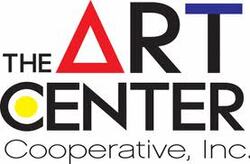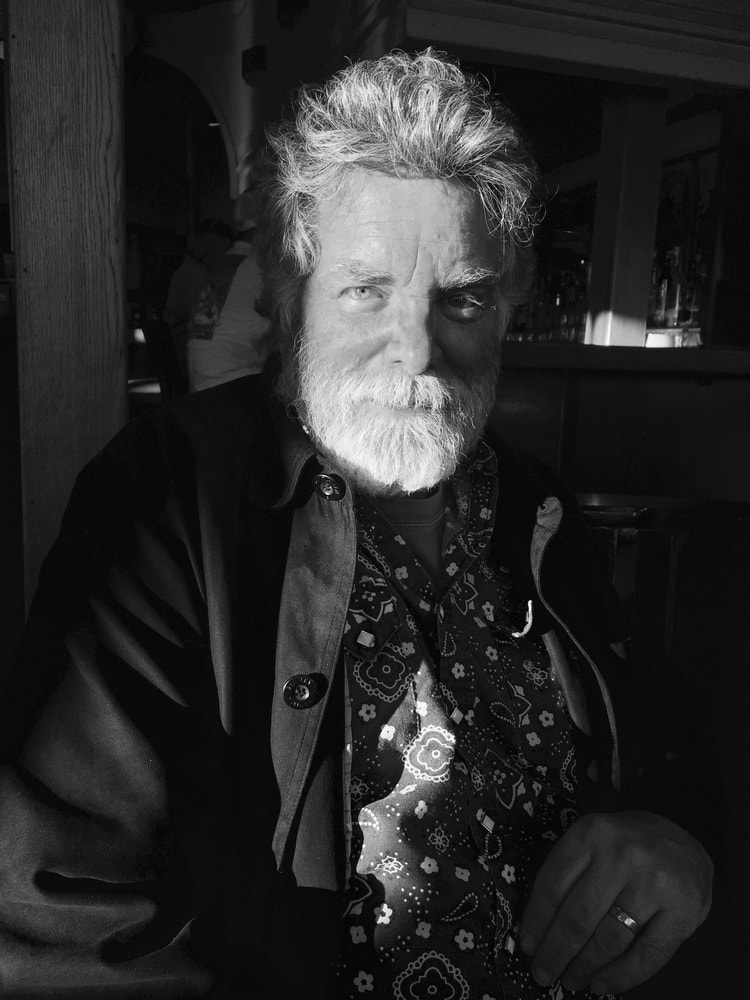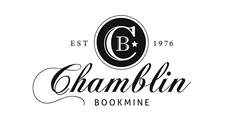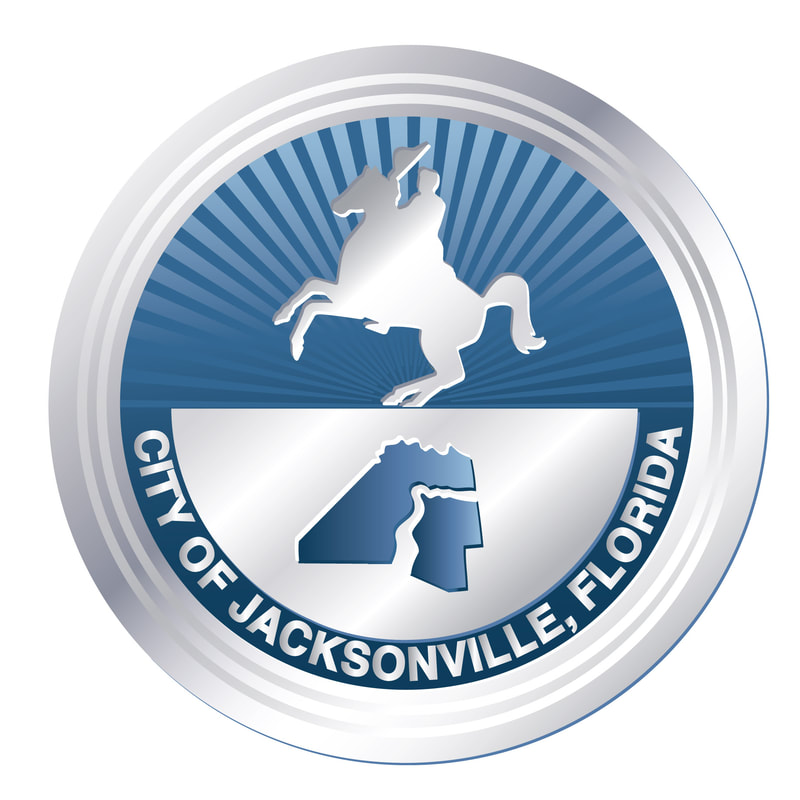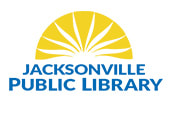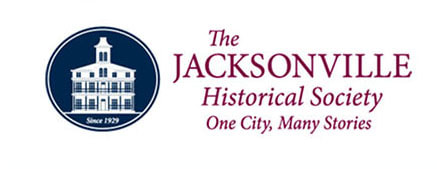|
|
The Way I See It
This is a freeform exhibition presented by the Jacksonville Artists' Guild. The variety and scope of this show is fascinating.
Exhibition Run Dates:
MAY 23rd, 2022 - JUNE 25th, 2022. at the Art Center Cooperative Gallery in San Marco. Visit 1225 Hendricks Ave. Questions call 904.233.9252.
Reception and Award Ceremony:
Sunday May 29th, 2pm-4pm
Exhibition Run Dates:
MAY 23rd, 2022 - JUNE 25th, 2022. at the Art Center Cooperative Gallery in San Marco. Visit 1225 Hendricks Ave. Questions call 904.233.9252.
Reception and Award Ceremony:
Sunday May 29th, 2pm-4pm
The Way I See It
Click on an image to find out all about the piece in the slide show above. You will be taken to a detail page for the artwork with information about it and the ability to purchase online if desired. Please visit our Gallery in person to get the full impact of these beautiful works.
The awards will be presented on May 29th at the Opening Reception 2pm-4pm
About the Show
Juror: Robert Leedy
|
“I think it was growing up around all of this water and light that must have influenced my choice of watercolor.”
Florida artist, Robert Leedy, believes there were early events that may have had an influence on his art. His mother took painting lessons in New York while she was pregnant. He has an early memory of frequently gazing at a reproduction of a Joan Miró painting from his crib. As a young child, he remembers his architect father rolling tracing paper down the hall and dropping pencils and crayons for the young Leedy to entertain himself. |
Born in Winter Haven, Florida in 1956, Robert grew up in Jacksonville, Florida and showed early promise as an artist. While attending college at Valdosta State University, Leedy changed his major from Biology to Art after taking a very inspiring Drawing class - on a whim - as an elective. The professor teaching the class was surprised to learn he was not an Art major.
Upon graduation in 1979 with a BFA in Art, Robert returned to Jacksonville and worked as a graphic designer with a small design firm. He eventually landed into a job as a fine wine consultant with a local distributor. This launched a 12-year career in the wine business which led to a position in the US Virgin Islands and Puerto Rico where he met his wife, Vicky. Leedy began painting full time and the couple spent many years living in places like Paris, Brussels, Buenos Aires and the Caribbean before returning to Jacksonville in 2010. “I think it was growing up around all of this water and light that must have influenced my choice of watercolor,” the artist claims. In 2013, his painting, “Ocean & Ahern” was included in Splash 14: Color & Light – The Best of Watercolor published by North Light Books. He has exhibited his work throughout the US and Puerto Rico and has past affiliations with Asociación de Acuarelistas de Puerto Rico, The Indiana Plein Air Painters Association and The Colorado Watercolor Society. He is currently a member of The National Watercolor Society. Robert Leedy maintains a working studio in the CoRK Arts District in Jacksonville’s Riverside area. The studio is closed to the public though tours can be arranged in advance by contacting the artist. |
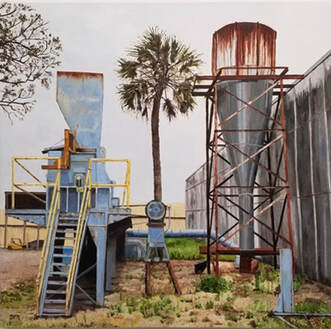
Florida Palm by Dawn Inglis Montgomery
The title alone, "Florida Palm", suggests that nature wins - in the end - with the battle over human development and industrial technology. But is there ever really any doubt of nature taking over despite the setbacks humanity imposes? No. Nature wins no matter how many wounds she incurs. Battles aside, this painting has an iconographic sense to it and a formality that garners attention. The centered palm adds to that formality. As artists, we learn not to center objects though there are instances when centering purposely draws attention and that is exactly what Montgomery is doing. There also is a juxtaposition of geometric shapes of the argo-industrial equipment and the natural, organic shapes of the trees, weeds, and grass. Old and rusted versus young and renewed. One aspect I really like about this painting - beyond its technical competency - is the removal of perceived beauty. The artist observes as a neutral observer - the way she sees it - and is willing to give equal attention to what often is presumed to be ugly. IN this way she makes it beautiful. BRAVO!
The title alone, "Florida Palm", suggests that nature wins - in the end - with the battle over human development and industrial technology. But is there ever really any doubt of nature taking over despite the setbacks humanity imposes? No. Nature wins no matter how many wounds she incurs. Battles aside, this painting has an iconographic sense to it and a formality that garners attention. The centered palm adds to that formality. As artists, we learn not to center objects though there are instances when centering purposely draws attention and that is exactly what Montgomery is doing. There also is a juxtaposition of geometric shapes of the argo-industrial equipment and the natural, organic shapes of the trees, weeds, and grass. Old and rusted versus young and renewed. One aspect I really like about this painting - beyond its technical competency - is the removal of perceived beauty. The artist observes as a neutral observer - the way she sees it - and is willing to give equal attention to what often is presumed to be ugly. IN this way she makes it beautiful. BRAVO!
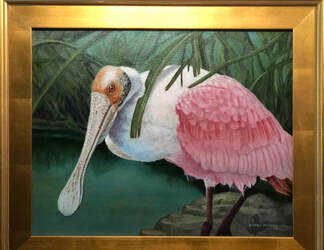
Bill by Betty McKee
For me, Betty McKee's painting of Spoonbill harkens, in some manner, another era. I wonder if that is the way she sees it? There is a sense of mystery in a quiet, shady corner where the bird feeds. This is a fine portrait of a handsome bird - its almost as if the bird is about to go extinct (it certainly is now though it is considered a threatened species) and this is the last glimpse of this magnificent creature. There are contrasting elements that set this mood: first, there is a strong play of complementary colors that grab the viewer's interest. Next, there is a contrast of textures - the bird's plumage against the smoothness of the reeds, the water, and the rocks; and finally, there is a contrast of light - the Spoonbill emerges into the light from the relative darkness of the surrounding foliage. I like the artist's use of zooming in on the subject towards a more tighter composition. The rendering is flawless yet the work is still painterly. The textures are amazing - I feel as though I can cup my hands and feel the varying textures of the Spoonbill's feathers. A fine homage, indeed.
For me, Betty McKee's painting of Spoonbill harkens, in some manner, another era. I wonder if that is the way she sees it? There is a sense of mystery in a quiet, shady corner where the bird feeds. This is a fine portrait of a handsome bird - its almost as if the bird is about to go extinct (it certainly is now though it is considered a threatened species) and this is the last glimpse of this magnificent creature. There are contrasting elements that set this mood: first, there is a strong play of complementary colors that grab the viewer's interest. Next, there is a contrast of textures - the bird's plumage against the smoothness of the reeds, the water, and the rocks; and finally, there is a contrast of light - the Spoonbill emerges into the light from the relative darkness of the surrounding foliage. I like the artist's use of zooming in on the subject towards a more tighter composition. The rendering is flawless yet the work is still painterly. The textures are amazing - I feel as though I can cup my hands and feel the varying textures of the Spoonbill's feathers. A fine homage, indeed.
